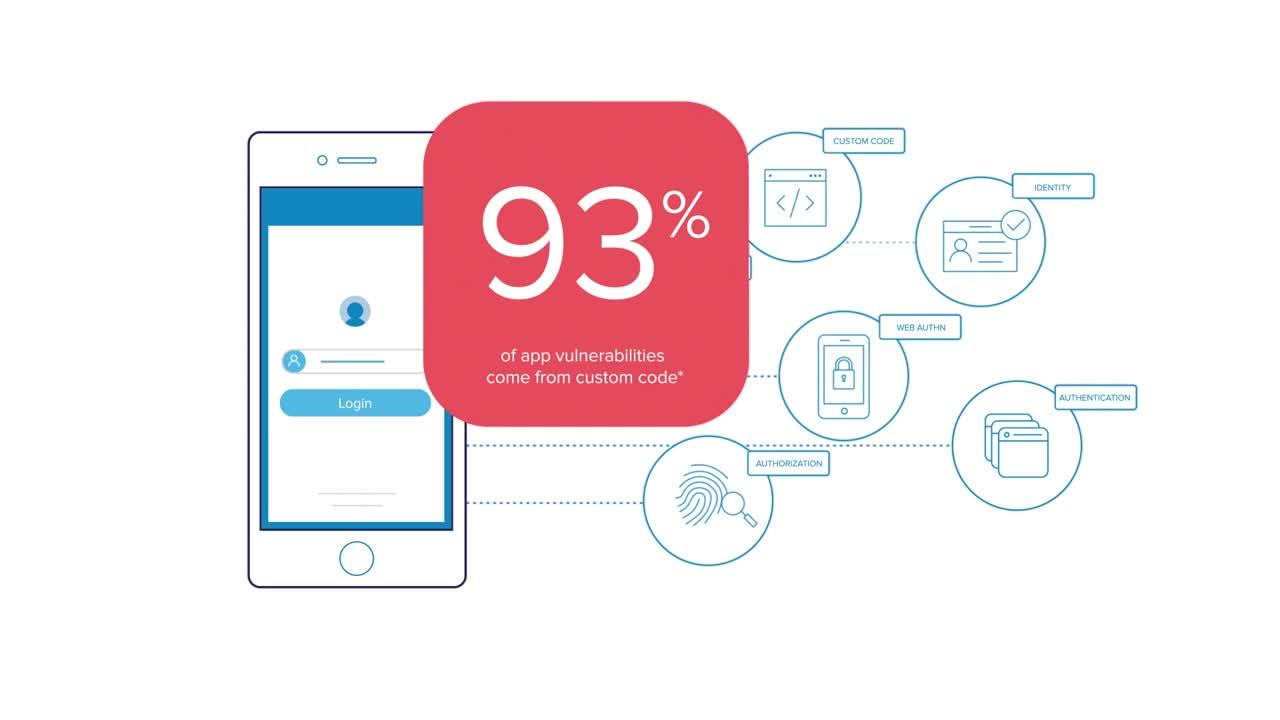5 Principles for Building Scalable Apps That Delight Customers
Designing and deploying an app is rarely simple. Customer needs are constantly evolving and your app probably looks and functions much differently today than when it was first released. The success of any modern application relies on how well it can adapt and grow along with customer needs—which requires your developers having the ability to easily build new features that inspire engagement and outperform competitors.
While you can’t always predict future trends and opportunities, you can build your app with scalability and identity at the core. If you follow the five principles below, you’ll be able to provide experiences that customers trust and enjoy, even as trends change.
1. Build on open standards
One of the first things to consider are identity standards, and it’s important to know which standards make the most sense for your app. Many companies start with support for a few standards and protocols—OAuth 2.0, OpenID Connect (OIDC), SAML 2.0, and SCIM.
If you identify your preferred standards early on, they will help guide a solid strategy with consistent support for your developers and use cases. There are many benefits to adopting open standards:
- Reduced time to market
- Lower overhead costs due to minimal refactoring
- Streamlined authentication experiences
The last point is particularly important for longevity. Authentication that’s reliable without being disruptive can help strengthen customer trust in your app and company. Strong trust ultimately leads to customer loyalty and positive word-of-mouth that attracts new users.
2. Centralize user stores
If your team has ever rolled out multiple apps—each with their own unique, disconnected customer data stores—you’ve probably experienced first-hand the problems that can arise. Managing multiple repositories is error-prone and costly, and when customer data is siloed and scattered between different stores, it can prevent customers from accessing all of their accounts and services.
In an era where customers expect relevant and interesting tailored experiences, disparate user stores will hold you back from meeting their needs. Unifying data is key to getting to know who your customers are and what they want, and then providing them relevant services and content.
By centralizing user stores, you can present a 360-degree view of your customers both internally to employees and externally to partners. This streamlined approach to user management can make it easier to scale, as you can always access the same set of identities and credentials.
Decentralized identity tech stack
Centralized identity tech stack
3. Meet customers where they are
Customers want simple, rewarding user experiences that speak to their needs. That means designing processes to be as frictionless as possible.
Among these experiences, streamlined onboarding is a priority. When a customer starts using your app, a convenient sign-up process can make a great first impression. Instead of a complex and rigorous enrollment process designed to get as much customer data as possible, use progressive profiling to invite customers to volunteer information gradually, at a pace they find comfortable.
To make your apps even more user friendly, opt for social sign-on solutions. This approach helps to create more seamless access experiences for your customers and allows them to manage their own profiles and passwords, taking the onus of troubleshooting out of your developers’ hands.
Paired with centralized user stores, these initiatives help you gather user data while reducing friction for your developers and customers.
4. Open up your ecosystem
Real scalability means moving quickly in the direction of the market, whether through adding more features, accommodating more users, or expanding your use cases. Closed systems impede fast progress—to scale effectively, you need an open platform for your developers and partners to access APIs and code.
In an open ecosystem, developers must be able to:
- Quickly register to a selection of APIs with scoped access
- Authenticate to the API or application and start interacting with your API
To do this, companies must securely manage developer credentials, such as API keys and user accounts, and authorize with different permissions in both single-tenant and multi-tenant architectures.
There are internal and external elements to consider when opening up your ecosystem: granting your team access to the resources they need to build off your API internally, and if you offer an external API, gate and monetize access to premium resources while offering a basic model for external developers. This approach can lead to new products, increased usage, and new revenue streams as you continue to monetize.
5. Prioritize security
For many people, a landscape of data breaches, misuse cases, and cyber attacks has made security and privacy top of mind—which makes it all the more important to add these core identity elements into your apps from the start.
Building on open standards, centralizing user stores, and meeting customers with federation—all add an additional level of security. The strategies we’ve discussed create scalability while contributing to a strong security posture. Open standards providers quickly issue new patches to counter vulnerabilities, cyber criminals have fewer entry points to attack when data is stored in one centralized place and, by using third-party authentication providers, critical parts of your app are maintained by leading security experts and regularly monitored.
Building scalable apps for today and tomorrow
Each of the five principles mentioned above can help organizations build highly scalable and successful applications—especially when used together. By putting scalability and identity at the core of your strategy, you can build apps that will exceed user expectations today and in the future.
Want to make sure your apps scale securely? Contact us to discover how Okta can help, or read our whitepaper to learn more about these five principles.


